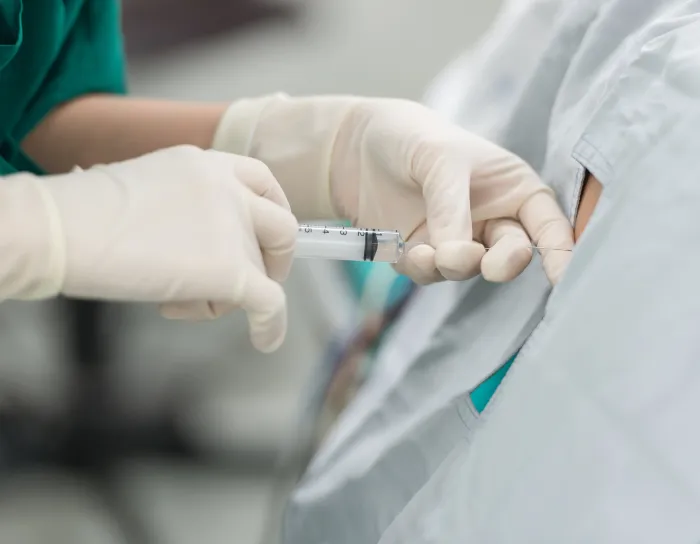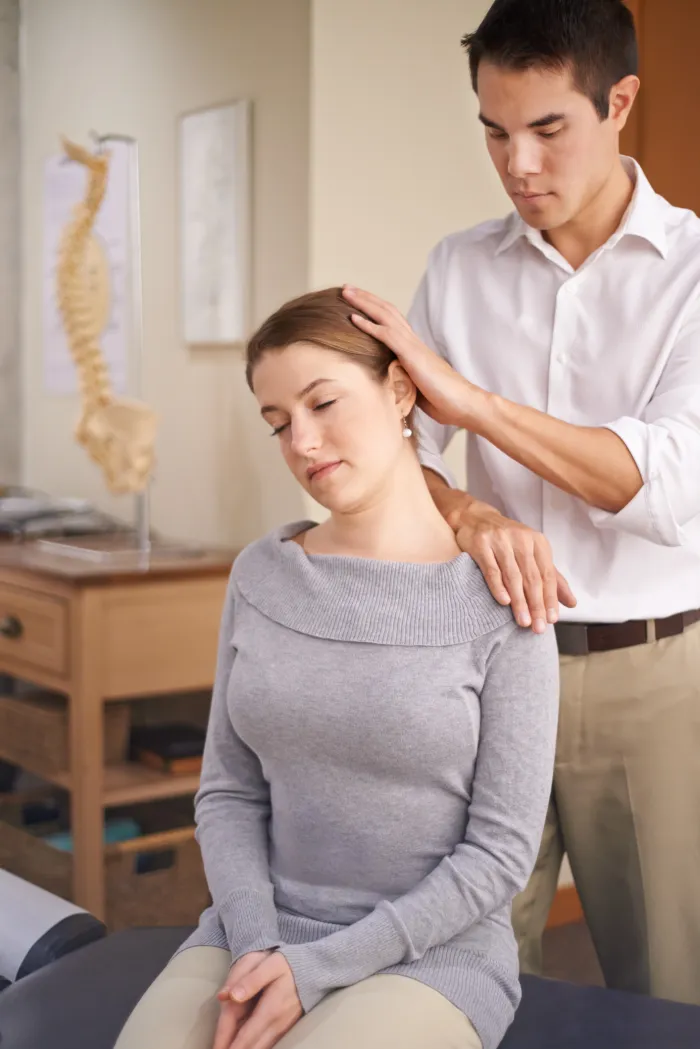NON-SURGICAL SPINE TREATMENT

Physiatry
Resurgens Spine Center's board-certified Physiatrists ("Fizz-eye-a-trists") are medical doctors that specialize in the non-surgical treatment of spine disorders. Our Physiatrists strive to provide patients with an accurate diagnosis and comprehensive care for their condition, focusing on patient education and non-surgical rehabilitation.
“Red Flags” - When to see a Doctor
There are many warning signs that can alert you to a potential back injury or condition. These "red flags" are signs you need to seek professional medical assistance.
Heat and Cold Therapies
Cold Therapy:
With a new
injury or a pulled muscle, apply ice to the area for the first 48 to 72 hours
to help decrease the inflammation and swelling. The cold numbs the area
and acts as a pain reliever. Ice should be placed on the injured area
several times a day for 20-30 minutes at a time. To avoid a "freeze
burn," a towel should be used for insulation to prevent the ice being placed
directly onto the skin. Different types of ice therapy include ice
massage, ice packs, frozen gel packs and cold water bottles.
- Treatment should not last more than 30 minutes
- Check the skin every 5 minutes to make sure there is no damage, such as freeze burn (redness and blistering of the skin)
- Do not place ice / cold packs directly on the skin; use a towel for insulation
- Wait 1 hour between cold treatments
- Cold therapy should not be used for patients who have rheumatoid arthritis, Raynaud's Syndrome, cold allergic conditions, paralysis, or areas of impaired sensation
Heat Therapy:
After the first 48 to 72 hours, heat therapy is often recommended. Heat helps to decrease muscle spasms, stiffness and injury. Heat should be placed on the injured or painful area several times a day for 20-30 minutes at a time. To avoid burning the skin, a towel is used for insulation. Different types of heat therapy include hot water bottles, electric heating pads, heated gel wraps, heat wraps and a hot bath or shower.
Safety
Tips for Heat Therapy:
- Treatment should not last more than 30 minutes
- During treatment, check the skin every 5 minutes to make sure it is not getting burned
- Do not lie on a hot pack or heating pad to avoid falling asleep and potentially burning yourself
- Do not use heat if you have no feeling in the affected part of your back
- Do not use heat if there is swelling or bruising; cold therapy is better in these situations
- Do not apply hot water bottles, gel packs, heating pads, etc., directly to the skin; use a towel as insulation to avoid burning your skin
- Do not use heat if you have poor circulation
- Do not use heat on open wounds or over stitches
- Do not use heat on areas of the body with dermatitis, deep vein thrombosis, or peripheral vascular disease
Low Back Pain Stretches
Non-Invasive Spine Options
The initial phase of non-surgical treatment of spine disorders typically involves non-invasive treatments including medications, ice and heat, and rehabilitation exercises that are specific to your spinal condition, often directed by our team of certified physical therapists at Resurgens Spine Rehabilitation. Our expert physical therapists work directly with your physician to improve, restore, or maintain physical strength and function resulting from your spinal condition or following surgery. When appropriate, physiatrists perform diagnostic nerve studies called EMGs.
Spine Diagnosis
The first step in formulating a treatment plan is to make an accurate diagnosis of the condition causing your symptoms. Our physiatrists perform a thorough evaluation, reviewing your history, physical examination and diagnostic imaging studies in detail to prescribe a treatment plan that is individualized for your individual symptoms. Imaging studies often include x-rays which show the bones and allow our physicians to evaluate your overall spinal alignment and look for conditions such as disc degeneration and arthritis. X-rays do not show soft-tissue such as disc herniations or pinched nerves. Diagnosing these conditions requires a special imaging study called an MRI which can be performed at one of our Resurgens MRI facilities.

Spine Injections
When symptoms do not improve with non-invasive treatments, interventional spinal injections may be offered. These may include epidural steroid injections, facet joint injections and sacroiliac injections. Spinal injections are performed by our physiatrists in our outpatient Surgery Centers using fluoroscopy (x-ray guidance) to ensure proper placement of the needle so the medication is delivered to the appropriate place. In some cases, spinal injections can provide long-term pain relief and help you avoid the need for surgical treatment.
Interventional spine injections are performed to provide pain relief or diagnostic information by injecting steroid medication and anesthetic into a joint or an area surrounding your spinal nerves. The injections are performed under fluoroscopy (x-ray guidance) to ensure proper placement of the needle so the medication is delivered in the appropriate place. There are several types of spinal injections including epidural steroid injections, facet injections and sacroiliac (SI) joint injections. Read more about non-surgical spine procedures and non-surgical neck procedures in our patient education center.
Spine Therapy
The physicians of Resurgens Spine Center utilize therapists with advanced training and expertise in spine rehabilitation. Our staff consists of some of the most well respected spine therapists in Georgia. With the patient as an active participant, the therapists work closely with our spine physicians to ensure that each patient receives personalized, one-on-one care and is returned to the highest level of function and pain relief possible. Our spine therapists conduct an extensive patient evaluation and work closely with the patient to set treatment goals and create an individualized therapy program.

